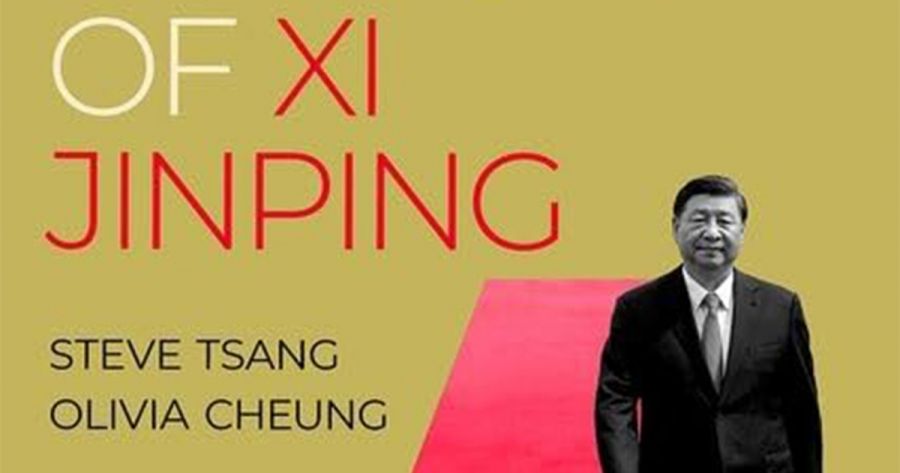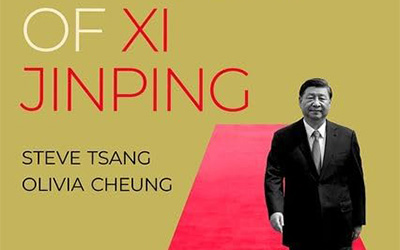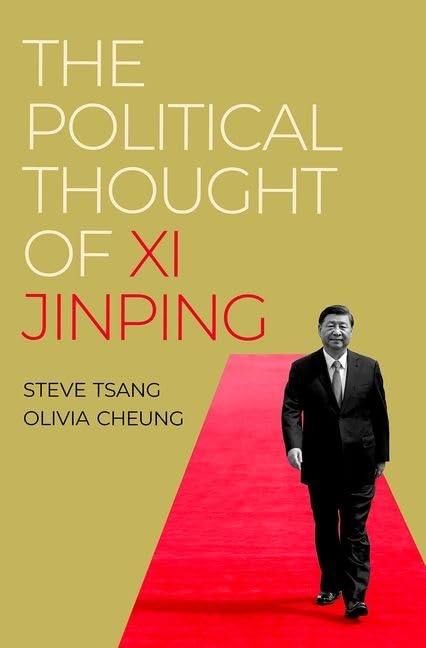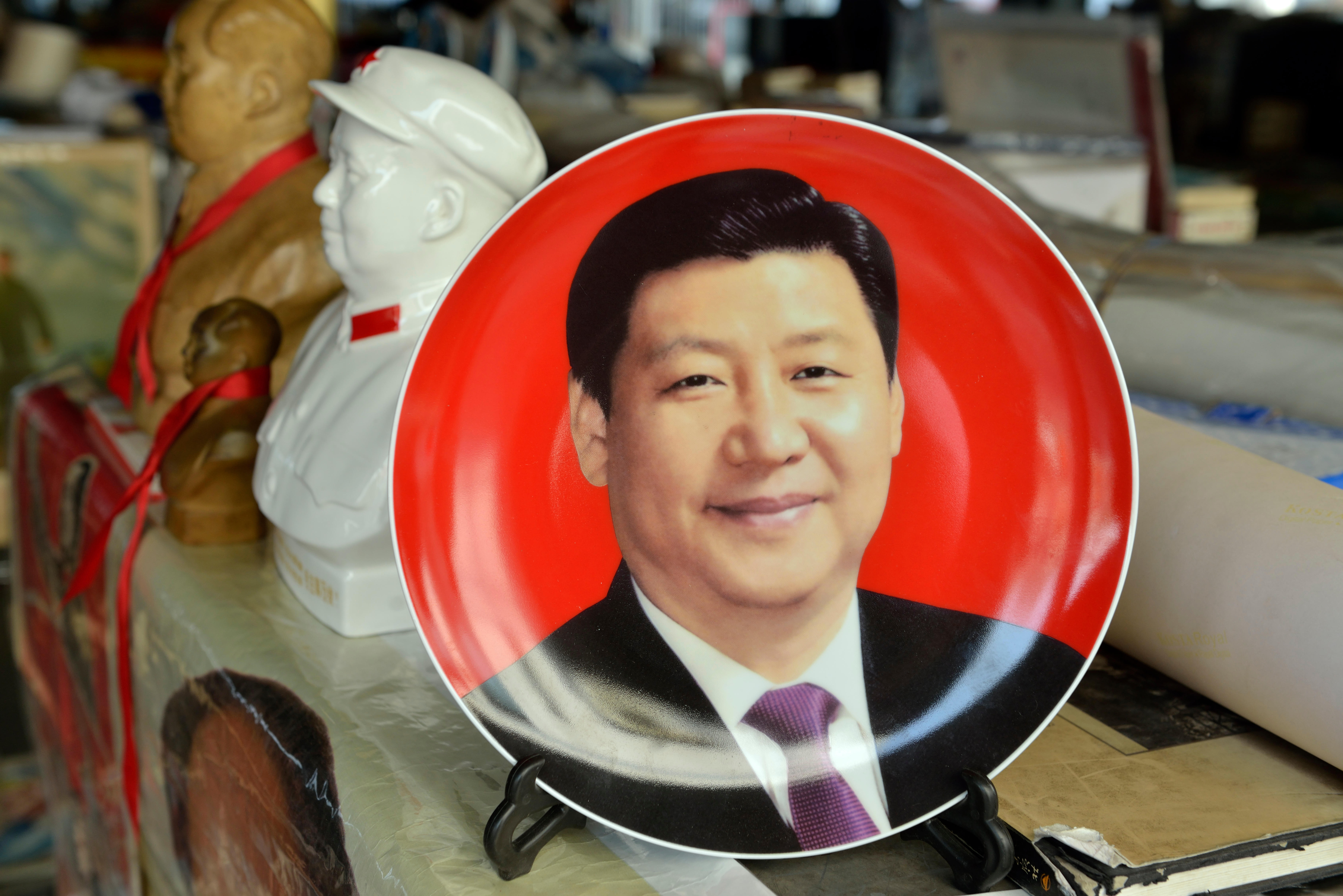
- Free Article: No
- Contents Category: Politics
- Review Article: Yes
- Article Title: Chairman of everything
- Article Subtitle: Understanding Xi Jinping
- Online Only: No
- Custom Highlight Text:
Two of the defining figures of our age are China’s President Xi Jinping and Russia’s President Vladimir Putin. Both are authoritarian rulers intent on reshaping the global Western-led order. They despise and mistrust the United States equally, and, to justify their hold on power, promote a nationalist and civilisationist vision that elevates the long historical and cultural roots of their societies. They have defined themselves as indispensable for their respective countries’ futures and standing in the world.
- Featured Image (400px * 250px):

- Alt Tag (Featured Image): Geoff Raby reviews ‘The Political Thought of Xi Jinping’ by Steve Tsang and Olivia Cheung
- Book 1 Title: The Political Thought of Xi Jinping
- Book 1 Biblio: Oxford University Press, £22.99 hb, 272 pp
- Book 1 Cover Small (400 x 600):

- Book 1 Cover (800 x 1200):

So, for China and, given its importance, the rest of the world, understanding Xi Jinping Thought and how this translates into policy is an important and urgent subject of study. For this reason, Steve Tsang and Olivia Cheung’s book The Political Thought of Xi Jinping is timely and welcomed, as are other recent books on this subject, such as Chun Han Wong’s The Party of One: The rise of Xi Jinping and China’s superpower future (2023).
When Xi became head of the Party in 2012, he set about systematically strengthening the CPC, rebuilding its legitimacy through far-reaching and continuing anti-corruption drives – catching tigers as well as mice, in Xi’s polemic – and dispatching rivals in the process. Consolidating his power, Xi’s hyper-authoritarianism transformed how China was governed. He became known as the ‘chairman of everything’. He brought ideology back to the centre of Chinese politics, dusted off the cult of personality, articulated a vision of China’s return to greatness in the world, and wrapped it all in a cloak of Chinese nationalism. The authors recount all this well. They construct a framework for analysing Xi’s thought and understanding its application in strengthening and guiding the CPC and state policies. As they say, there is often a gap between Xi Thought and reality, but for them what matters is to ‘conceptualize it as Xi’s guide on the direction of travel for China until mid-century’.
To that end, the book focuses on politics, ideology, governance, social control, economic management, and foreign policy. These are the subjects of its substantive chapters. Each provides a detailed and extensively researched survey of key developments in these areas.
Xi has gone further than the post-Mao leadership and made his thoughts the ‘Core’ that direct, guide, and judge the actions of leading cadres at all levels of the CPC. The book reveals how incredibly busy Xi and the propaganda machinery have been in inserting Xi Thought into all aspects of the Party’s work and beyond that into government policy.
 Memorabilia of Chinese president Xi Jinping on sale with that of Mao Zedong in Panjiayuan flea market in Beijing, 2014 (Lou Linwei/Alamy)
Memorabilia of Chinese president Xi Jinping on sale with that of Mao Zedong in Panjiayuan flea market in Beijing, 2014 (Lou Linwei/Alamy)
The authors carefully note how Xi has reinterpreted, in his own image, many of the Party’s long-standing doctrines: creating a palimpsest where Xi has overlaid what was there, though the original doctrine is still discernible. For example, Xi Thought is said to be based firmly on Marxism-Leninism, but Xi has made it ‘Sino-centric’. He has introduced elements of supposedly ‘traditional’ Chinese Confucianist values. This has rendered Marxism-Leninism less an import from the West and more something home-grown, to legitimise Chinese nationalism.
An especially important aspect of this, for China’s governance, is the redefinition of China’s implicit social contract which served the Party and the country well for more than two decades after the Tiananmen Square violence in 1989. The authors show how Xi Thought has offered the people an ‘upgraded de facto social contract’. The earlier one was basically to stay out of politics and let the Party govern, while people were free to do whatever else they liked within the law, such as becoming rich.
Xi’s formula was Socialism with Chinese Characteristics For the New Era (italics added), which has been inscribed into the Party’s constitution. The first part was Deng Xiaoping’s, which was a catch-all phrase to legitimise the pursuit of material economic development by whatever means worked: markets from capitalist economies, opening the economy, attracting foreign participation. This was captured in one of Deng’s many memorable aphorisms: ‘It doesn’t matter if the cat is black or white as long as it catches mice.’
Xi’s addition of ‘For the New Era’ can itself be seen as a pragmatic adaptation to the actual conditions prevailing in contemporary China – building on what has gone before rather than an abrupt break with what has gone before. Material needs have been met, and so policy focuses on quality-of-life issues. This does not require recourse to notions of Marxism to explain. A weakness, however, is that Marxism is not defined by the authors. Xi has also added two additional elements to the social contract. One is to ‘actively defend regime security and accept more intrusive Party control over their lives’. The other is to ‘reinvigorate the mass line’. This harks back directly to Mao and is entwined with Xi’s cult of the personality, another Mao throwback. ‘While Xi guides the Party to pursue higher standards in improving the quality of life for the people, he also expects and requires them to embrace the Party and him, the core leader, and to express their support more overtly.’
Under Xi’s rule, China is unquestionably a different place today from what was in the decades of the reform era, which began in 1979. What is arguable, however, is how sharp is the discontinuity under Xi. The authors, for example, make much of the end of collective leadership and the institutionalisation of the transfer of power, whereby the General Secretary of the Party served two five-year terms. But the institutionalisation was an understanding, not a rule enshrined in law. Having operated on only one occasion – Hu Jintao’s transfer to Xi – it was hardly a convention steeped in time, such as Britain’s unwritten constitution. When Jiang Zemin, Hu’s predecessor, stepped down after thirteen years in the job, he held on to the chairmanship of the powerful Central Military Commission for another two years, and then only reluctantly gave it up.
In any event, this institutional arrangement, on which the authors put so much weight when defining Xi’s tenure, was arguably bust at the time of his ascension. His princeling rival, Bo Xilai, backed by former Standing Committee member and internal security tsar Zhao Yongkang, sought to block Xi. Although we will never know the inside story, it was in effect some sort of attempted palace coup. It is worth recalling that at this time, just as he was about to take power, Xi Jinping went missing for two weeks. This has never been explained.
If the institutional norms had been followed, perhaps Xi may have been a different leader. But given that he took over in a power struggle, it is arguably unsurprising that what followed were continuous anti-corruption drives to clean up the Party and weed out rivals, and a resort to more authoritarian rule. In such circumstances, a return to ideology and a cult of a personality could be attributable to systemic factors and not just to the belief system and personality of the man. It is at least worth considering this counterfactual.
China’s political system is Leninist. When collective decision making was ditched, China reverted to its Leninist origins of political and social organisation. The authors are firmly of the view that the man creates the system, which is inevitable in a discussion of the political ideas of the leader of an authoritarian state. But in China the leader rules at the indulgence of the Party élite. The leader can be changed – not the Party.
Both Xi (now seventy) and Putin (seventy-one) will probably be gone during this decade, but it is much less likely that the CPC will disappear. Whoever leads this resilient Leninist institution will continue to be of enduring interest.


Comments powered by CComment